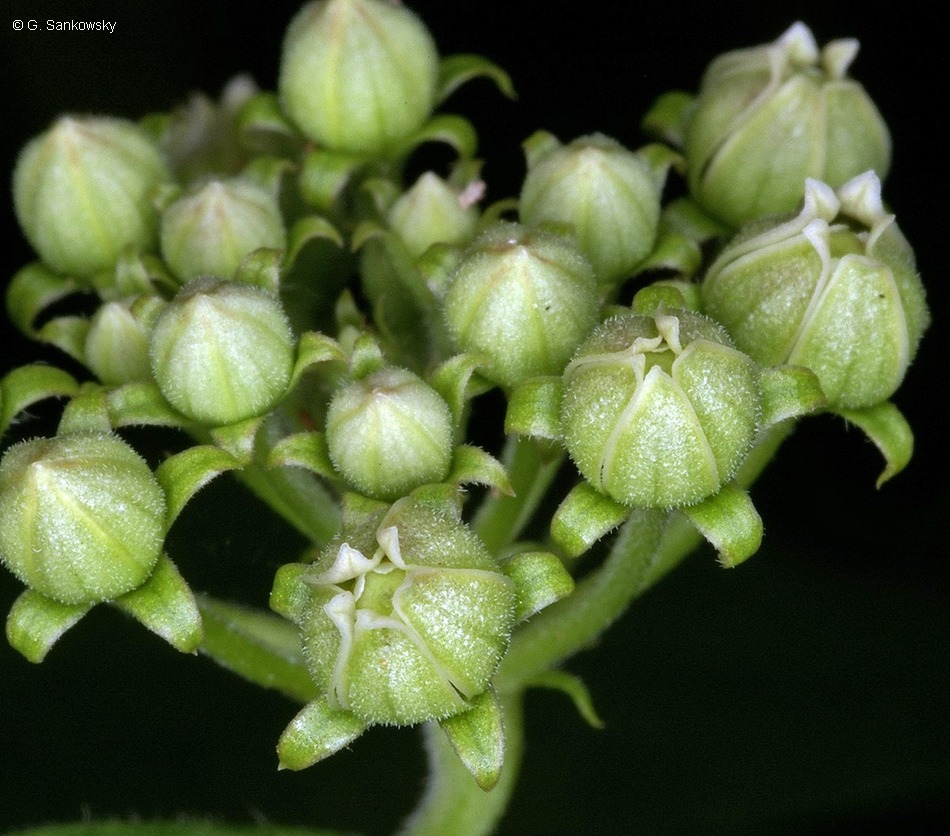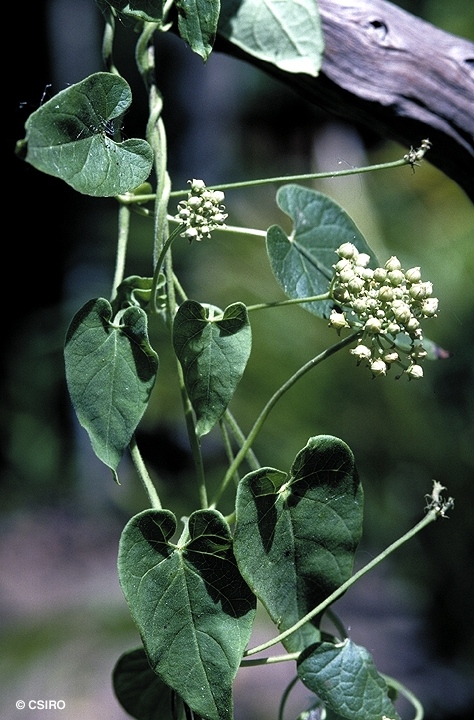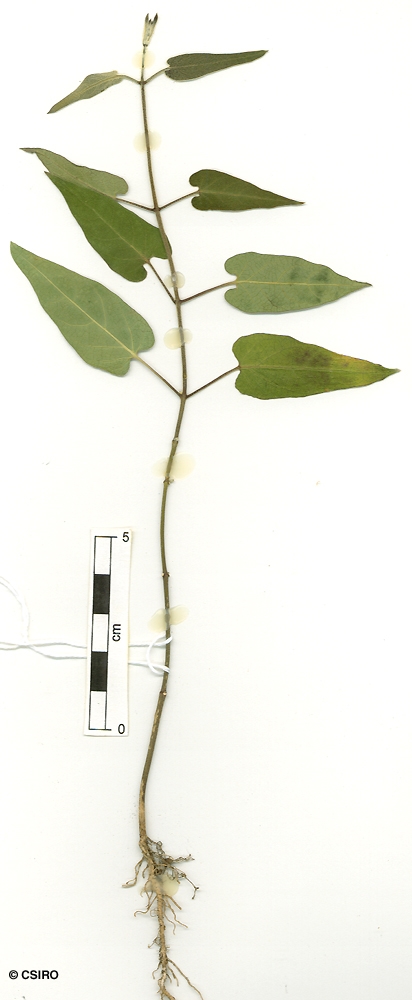Australian Tropical Rainforest Plants - Online edition
Cynanchum pedunculatum R.Br.






Brown, R. (1810) Memoirs of the Wernerian Natural History Society, Edinburgh 1 : 45. Type: Northern Territory, Arnhem North Bay [Melville Bay], 14 FEb. 1803, R. Brown; lecto: BM. Fide P. I. Forster, Austrobaileya 3: 461 (1991).
A slender vine not exceeding a stem diameter of 2 cm.
Leaf blades about 3.5-7 x 2.5-5 cm, petioles about 2.5-4.5 cm long. Upper and lower leaf blade surfaces clothed in short pale-coloured hairs. Lateral veins about 4-6 on each side of the midrib. Twigs, stems and petioles clothed in short pale-coloured hairs. A group of about 5 reddish colleters (small finger-like glands) usually visible on the upper surface of the midrib near its junction with the petiole. A pair of reduced leaves often present in the axil of one leaf of each pair, usually associated with a flower or fruit peduncle. All plant parts produce a copious milky exudate.
Inflorescence umbelliform, a condensed raceme, about 8 cm long, each flower subtended by a bract about 2.5-4 mm long. Flowers about 5-6 mm diam., scarcely opening. Sepals reflexed, about 3-3.5 mm long, glands present on the inner surface close to the base. Corolla tube about 1-2 mm long, lobes about 3-4 mm long. Corona resembles a ruffled skirt around the staminal column at the base of the corolla tube. Anthers about 1.25-2 mm long, including the terminal appendage. Pollen aggregated in pollinia. Carpels two, each about 2.5 mm long. Ovules numerous.
Fruits often paired. Individual fruiting carpels about 5.5-9 x 2.5-3.5 cm. Seeds numerous. Seeds about 6-13 x 3-8 mm. Plumes about 20 mm long. Embryo about 5 mm long. Cotyledons about 3-3.5 x 2 mm. Radicle about 1.5 mm long.
Cotyledons oblong to elliptic, mainly glabrous, about 19-21 x 9-12 mm. First pair of leaves ovate-triangular, apex acute, base truncate to obtuse. Third and fourth leaves cordate. At the tenth leaf stage: all plant parts produce a copious white exudate when cut or broken. Leaf blade narrowly cordate, apex acute, base auriculate. Stipules gland-like, about 0.2 mm long. Usually 2-4 small reddish colleters (glands) present on the upper surface of the midrib close to its junction with the petiole. All plant parts densely clothed in short, curved pale-coloured (whitish) hairs. Midrib +/- flush with the upper surface. Seed germination time 14 days.
Plants die back to the perennial rootstock during the dry season and shoot following the onset of the pre-wet season storms. Forster (1996).





